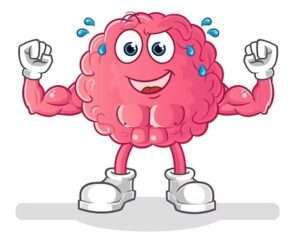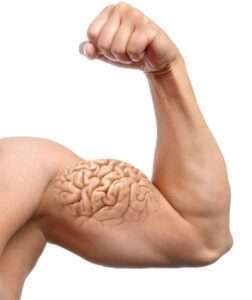Unleashing the Power of Muscle Memory in Karate.
The Science Behind Effortless Execution.
Have you ever noticed the fluidity and precision of experienced karate practitioners as they execute powerful strikes, graceful stances, and intricate movements? Behind their impressive performance lies a fascinating phenomenon called muscle memory. In this article, we will explore the concept of muscle memory and its relevance to karate, specifically in performing kihon (basic techniques), kata (forms), and bunkai exercises with a partner.
Understanding Muscle Memory.
 Muscle memory refers to the ability of our muscles to learn and remember specific movements through repetitive practice. It is not an actual memory stored within our muscles but rather a term used to describe the way our bodies automate and optimize movements. When we learn a new technique in karate, such as a punch or a kick, it initially requires conscious effort and concentration. However, with consistent practice, our brains form neural connections that strengthen the pathways involved in that movement. These connections become more efficient over time, allowing us to perform the technique more smoothly and accurately.
Muscle memory refers to the ability of our muscles to learn and remember specific movements through repetitive practice. It is not an actual memory stored within our muscles but rather a term used to describe the way our bodies automate and optimize movements. When we learn a new technique in karate, such as a punch or a kick, it initially requires conscious effort and concentration. However, with consistent practice, our brains form neural connections that strengthen the pathways involved in that movement. These connections become more efficient over time, allowing us to perform the technique more smoothly and accurately.
Research Findings.
 Researchers from various universities have conducted studies shedding light on the science behind muscle memory. For example, a study led by Keele University showed that human muscles possess a “memory” of earlier growth at the DNA level. This research suggests that our muscles retain information about their previous development, which can contribute to faster strength and volume gains when we resume training after a period of inactivity. This finding highlights the incredible adaptability of our muscles and their capacity to “remember” prior training, even at a molecular level.
Researchers from various universities have conducted studies shedding light on the science behind muscle memory. For example, a study led by Keele University showed that human muscles possess a “memory” of earlier growth at the DNA level. This research suggests that our muscles retain information about their previous development, which can contribute to faster strength and volume gains when we resume training after a period of inactivity. This finding highlights the incredible adaptability of our muscles and their capacity to “remember” prior training, even at a molecular level.
Applying Muscle Memory to Karate.
In the world of karate, muscle memory plays a crucial role in honing our skills and enhancing our performance. Let’s see how it applies to three essential aspects of karate training: kihon, kata, and bunkai exercises with a partner.
Kihon (Basic Techniques).
Kihon forms the foundation of karate training, encompassing punches, kicks, blocks, and stances. Through repetition and focused practice, our muscles learn the proper biomechanics and timing required for executing these techniques. As our muscle memory develops, we can perform kihon more fluidly and with greater efficiency. The movements become second nature, allowing us to focus on other aspects, such as power generation, speed, and accuracy.
Kata (Forms).
By practicing kata diligently, our muscle memory internalizes the sequences, transitions, and applications of each movement. Over time, the kata becomes ingrained in our muscle memory, enabling us to execute it effortlessly and with a heightened focus on proper form, breathing, and intent. Muscle memory allows us to flow through the kata, maintaining the rhythm and precision required for its effective performance.
Bunkai.
Bunkai involves the practical application of techniques within kata against a partner. When we engage in bunkai exercises, muscle memory helps us synchronize our movements with our partner’s actions. As we repeatedly practice these drills, our muscles become attuned to the timing, distance, and angles required for effective responses. Muscle memory enables us to react instinctively and swiftly, allowing for seamless and well-coordinated interactions with our training partner.
Maximizing the Potential of Muscle Memory
To harness the full potential of muscle memory in karate, it is essential to focus on quality practice and proper technique. Consistency, repetition, and attention to detail are key. By practicing correct form and alignment from the outset, we lay a solid foundation for muscle memory to develop accurately. Conversely, practicing incorrect techniques can lead to the formation of detrimental muscle memory patterns, which may hinder progress and require unlearning in the future.
Muscle memory is a remarkable attribute that contributes to the mastery of karate techniques. Through repetition and practice, our muscles learn and retain the movements involved in kihon, kata, and bunkai exercises. As we train, our muscles become increasingly efficient, allowing us to perform with greater fluidity, speed, and precision. Understanding the science behind muscle memory empowers us to optimize our karate training and unlock our true potential as martial artists.
Thanks for reading
Gert
